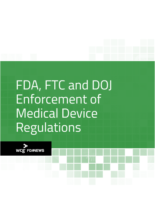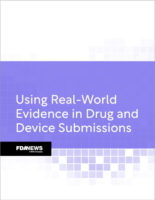
Home » Study Finds High Frequency Tags Better Than UHF for RFID
Study Finds High Frequency Tags Better Than UHF for RFID
It is better under a majority of objective measures to use high frequency (HF) rather than ultra-high frequency (UHF) radio frequency identification (RFID) tags on individual pharmaceutical items such as pill bottles, according to a recent research paper.
HF and UHF tags are both used to fight against drug counterfeiting and diversion. The point of RFID is "to trace from the point of manufacturing to the point of sales," noted Chris Fennig, director of professional services, ODIN technologies. "But the application introduces a host of physics issues, including the size of the tags and, more importantly, their frequency."
HF tags, which were introduced onto the market first, outperformed UHF tags in five of eight performance measures, according to the study conducted by ODIN and funded by Unisys. UHF came out on top in two of the measures and the two frequencies tied on one measure, the study noted.
The study, "Pharmaceutical Item Level RFID: Battle of the Frequencies," examined only RFID tags currently in commercial use, not prototypes. The tags tested were made by Symbol Technologies, Texas Instruments, Omron, RF IDentics and UPM Raflatac.
Since there is a wide range in RFID tag and reader performance, the researchers used multiple UHF and HF tags and readers throughout the study and based the final performance analysis on the best-performing reader and tag combinations in each frequency.
The performance measures included five "metrics" and three "use cases" that are typical in the pharmaceutical supply chain, Fennig said. The metrics and their results are as follows:
Read distance -- how far away the RFID readers can be and still interpret tags on individual items. UHF prevailed over long distances (up to several feet); but on manufacturing lines, the scanners may only have to operate over short distances; Orientation sensitivity -- how well the tags can be read when they are oriented away from a reader antenna. "One of the main issues is the ability to get power out to the tag so it can be read," Fennig said, adding that HF did "much better" in this regard; Material dependence -- how well tags can be read when on liquid bottles or blister packs, as opposed to containers holding powder, tablets or capsules. HF did better here; Consistency of tag quality for each frequency, where HF did better; and Maximum encode speed -- how fast RFID tags can be encoded with the desired information. UHF did "much better" in this area due to the inherent characteristics of the technology, Fennig said. But he emphasized that "we did find HF to be fast enough" for pharmaceutical packaging lines.
It was reassuring that both frequencies passed the encoding speed test, observed Todd Skrinar, healthcare and life sciences practice leader at Unisys. "A lot of pharmaceutical manufacturers that are considering using RFID have expressed concern that it be able to keep up with the speed of the packaging lines," he said.
Perhaps surprisingly, the "read rate"-- the rate of successful tag scans -- was not studied. "Read rate is a misnomer," Fennig said. "What's important is to capture the tag data at least once."
The study also examined RFID use in various situations along the supply chain. The study looked at standard pill bottles, liquid-filled bottles and blister packs, as well as cases and pallets. The tests included evaluating RFID scans:
On products on a moving pharmaceutical packaging line. The result was a draw between UHF and HF; On multiple, closely packed items in cases at a short distance from the scanner. HF was more effective; and On items packaged in cases on pallets at distances that are common for supply chain applications. Again, HF was more effective.
"The goal of the study is to bring scientific rigor to the boxing match between HF and UHF," said Fennig. "There was no scientific rigor before, just vendors' claims. We are unbiased. We don't care who wins the debate, we just want to help industry make scientific decisions."
"When we see barriers in the industry's adoption curve, we want to get in there and provide some clarity," said Skrinar. "There was a clear blind spot that needed to be addressed with research."
"The research presents solid, physics-based answers to help guide regulators and drug manufacturers in making successful decisions to improve drug safety," said Patrick Sweeney II, ODIN technologies president and CEO.
The study is available at www.ODINtechnologies.com/store (http://www.ODINtechnologies.com/store). -- Martin Gidron (mailto:mgidron@fdanews.com)
KEYWORDS FDA Technology
Upcoming Events
-
07May
-
14May
-
30May
